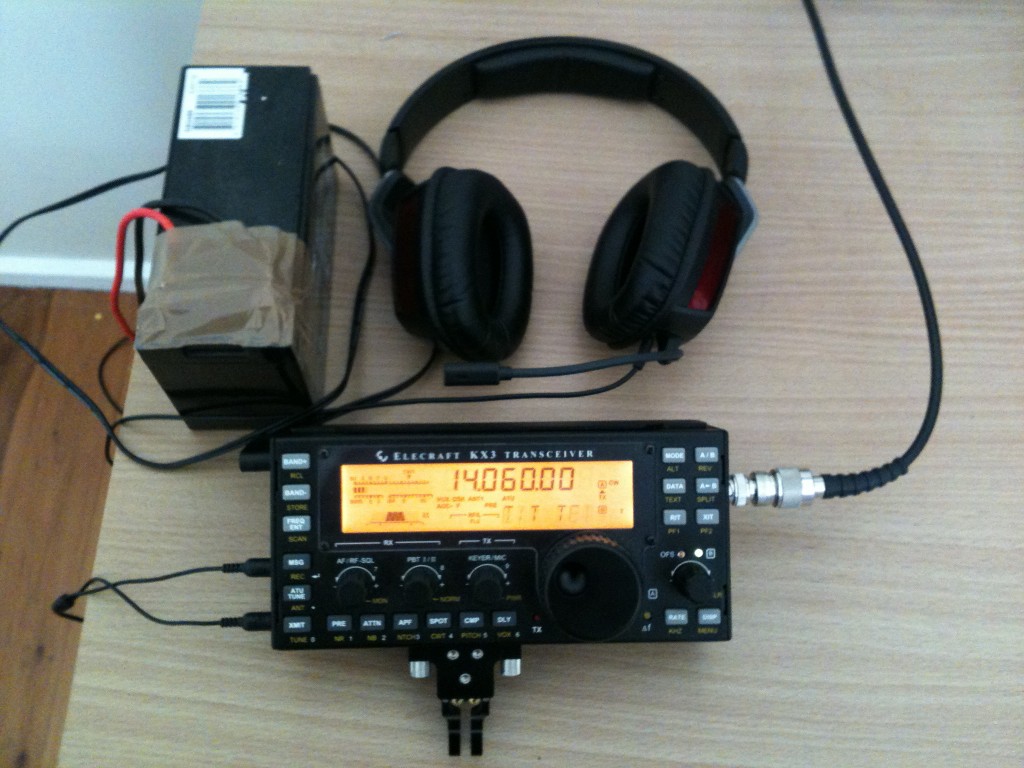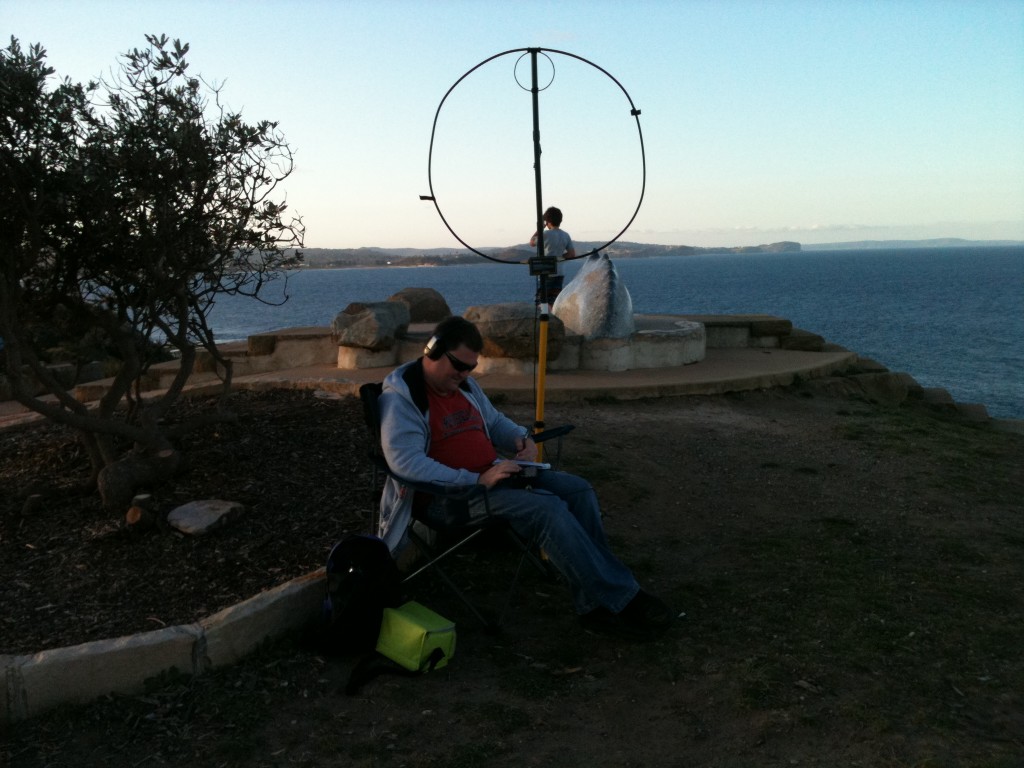Operating Portable from Long Reef

Having had my Elecraft KX3 ultra-portable radio for a few months now, I felt it was high time to take it out into the field. In particular I was curious to see how it would perform with my Alexloop magnetic loop antenna. This antenna covers 40m-10m, and while it clearly isn’t going to compete against a dipole, it is very quick and easy to set up, and should normally give reasonable performance on the higher bands at least.
It was a beautiful sunny Saturday afternoon, and the first order of business was to decide on an operating location. For this, I met up with club members Dom VK2JNA, Chris VK2HX and Roger VK2GHB at the local coffee shop to strategise over a cup of coffee, and with some further input from Greg Vk2XE via the 2m repeater, we finally settled on the headland at Long Reef.

My equipment consisted of the Alexloop, the KX3 with built-in CW paddle, a set of headphones with a boom mike, and an external 7Ah gel-cell battery. While the KX3 can run off 8 internal AA-size cells, this limits the power output to 3-5W, and so I decided to take the external gel-cell in order to run the full 10-12W.
My first contact was to ZL2MS on 20m CW, who had just finished working F5TZN in France. The French station was quite strong, but there were quite a few other stations calling, and unfortunately I didn’t manage a contact. Tuning around the bands, I heard a number of other DX stations, including TG9AJR in Guatemala, HP1RCP club station in Panama, and LA8SGA in Norway.
I thought I’d then try a bit a SSB, but the wind noise in the microphone was quite bad, so in the end I decided to stick with CW. I put out a number of CQ calls, but didn’t get any takers. Later when I checked the reverse beacon net on the Internet, I did find that I had been heard by a station in Finland.
As I was tuning around the bands, a number of people at Long Reef walked up to me and asked me what I was doing, so I explained what ham radio was all about. It turned out that the father of one of the onlookers used to be a ham over in the Netherlands, and so we had a nice long chat about his dad.
It was a beautiful spot, and a really nice atmosphere. Even though I didn’t make so many contacts this time, it was a very enjoyable way to spend a lazy Saturday afternoon, and I’m looking forward to finding an opportunity to do it again.